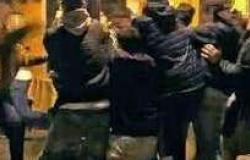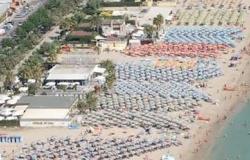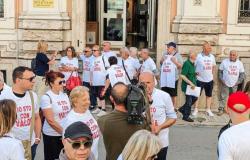Polls open today, Saturday 8 June, and tomorrow, Sunday 9 June, for the European elections and for the administrative elections through which the new members of the European Parliament and the city councils of the municipalities called to vote to elect the new mayor will be elected. If the European elections concern all citizens with voting rights, as regards the administrative elections, the citizens of Mirandola, San Felice, Concordia, Medolla, Cavezzo, San Paiutonio, Bastiglia, Ravarino, Nonantola, will go to vote in the lower Modena area. Soliera and Carpi. Today, Saturday 9 June, the polling stations will be open from 3pm to 11pm, while tomorrow, Sunday 9 June, you can go and vote from 7am to 11pm.
European elections
We are voting for the election of the 76 members of the European Parliament belonging to our country: in Italy over 51 million citizens will go to vote, i.e. the total number of those registered on the electoral lists. Voters, explains the Interior Ministry, must go to vote in possession of a valid identity document and electoral card. In the event of loss or running out of spaces for stamping on the card, it can also be requested on voting days at the electoral office of the municipality where you are registered on the electoral lists.
As regards the European elections, it is possible to vote for only one list and separate voting is not permitted. The voter can draw a mark on the symbol of the chosen list, even without indicating candidates. The names of any candidates chosen must be indicated on the lines printed to the right of the symbol, writing the surname or the name and surname in case of homonymy. You can express from one to three preferences. In the case of two or three preferences, they must refer to candidates of different genders, otherwise the second or second and third preferences will be cancelled. Candidates must belong to the voted list. The lists of candidates presented for each constituency and the symbols of the parties, movements or organized political groups can be consulted online (here is the link), as well as the mock-ups of the ballot papers (also proposed below), of a different color for each of the 5 electoral constituencies into which the national territory is divided (Emilia-Romagna and, therefore, also the Province of Modena, falls within the North East Italy constituency).
Administrative elections
All Italian citizens registered on the electoral lists of the municipalities called to the polls to elect mayor and municipal council have the right to vote (for the Lower Modena area the municipalities of Mirandola, San Felice, Concordia, Medolla, Cavezzo, San Poxidenio, Bastiglia, Ravarino, Nonantola, Soliera and Carpi) who turned 18 on the date of the vote. Foreign citizens belonging to member states of the European Union and residing in the municipalities involved in the electoral consultations and registered in the added electoral lists also have the right to vote.
Municipalities with over 15 thousand inhabitants
Voting is done on a single ballot, which shows the names of the candidates for the office of mayor and the symbol or symbols of the lists that support him. There are three voting possibilities:
– draw a mark only on the symbol of a listso as to automatically vote for the candidate supported by the latter, expressing a preference for the latter;
– draw a mark on a list symbol and, at the same time, draw one on the candidate mayor of another listobtaining the so-called ‘split vote‘;
– draw a mark only on the name of the mayoral candidatethus voting only for the individual candidate and not for the list or related lists.
The voter also has the opportunity to express one or two preferential votes writing the names of non including more than two candidates in the voted list. If there are two preferences expressed, they must necessarily concern candidates from different sex (woman-man or man-woman). Otherwise, the preference following the first is considered null. Whoever manages to obtain the right is elected mayor in the first round absolute majority (at least 50% + 1 of the votes). In case of failure to reach this threshold, the runoff between the two candidates with the most votes on Sunday 23 June (from 7am to 11pm) and Monday 24 June (from 7am to 3pm). In the second round, whoever receives the is elected highest number of votes.
Municipalities with less than 15 thousand inhabitants
Mayor and councilors vote with one single card, which contains the name of the candidate alongside the symbol of the list that supports him. You vote by drawing a sign on the list mark or on name of the mayoral candidate. It is not foreseen split vote: the votes obtained by the candidate for the office of mayor are connected to the list connected to him. As for the municipalities of less than 5 thousand inhabitantsyou can express a preference for a councilor by writing the surname in the line next to the symbol of the list to which it belongs. In the municipalities between 5 thousand and 15 thousand inhabitantstwo preferences can also be expressed, necessarily of different sex (otherwise the second preference will be cancelled).
The candidate who receives the is elected mayor highest number of votes. In the event of a tie between two candidates, the ballot for the days of Sunday 23 June (from 7am to 11pm) e Monday 24 June (from 7am to 3pm). Even in this circumstance, whoever gets the win wins majority of votesi, while in the event of a further tie, il is elected older of the two. Immediately after the election of the mayor the town Councilof which i 2/3 are attributed to list that supports the winning candidatewith the remainder 1/3 distributed at other lists.
READ ALSO:







